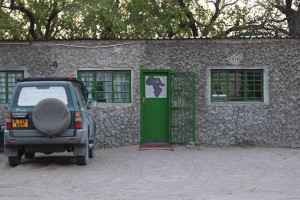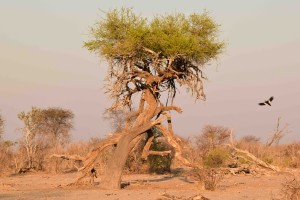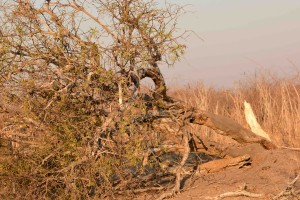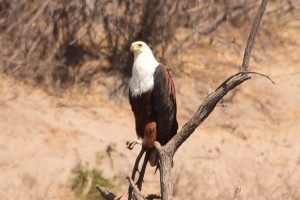Position Available: Administrator
September 2, 2016
Bots50 – Celebrating 50 Years of Independence in Botswana – By Hayley Blackwell 08 Oct16
October 8, 2016My transition from the city to bush life – By Masego Mokobela, Research Assistant
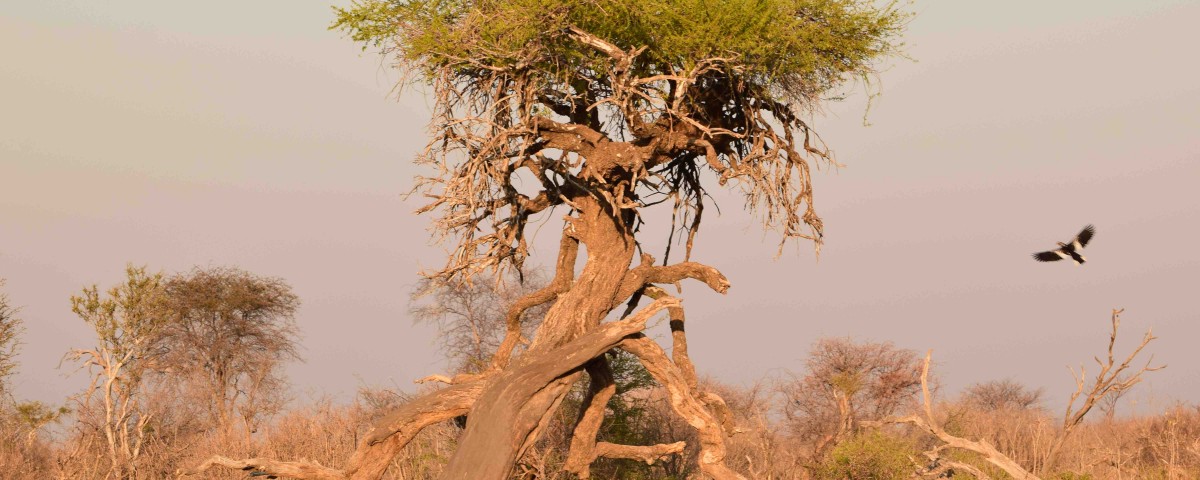
Shepards Bush Tree
Since I can remember, I have always wanted to be a researcher that lives in a bush camp. As a child, I used to watch “The Wild Thornberrys” animated TV show and saw my life in every episode. The thrill, the adventure, the colourful and unpredictable interactions with wild animals. So, when Elephants for Africa (EfA) offered me a job as a field researcher I was excited. I would be living my dream, pursuing my passion.
My drive from the Makgadikgadi Pans National Park (MPNP) gate to the EfA campsite was an interesting one. The bush felt both strange and familiar. It felt like a cattlepost. The different tree
canopy levels, the river, the animal dung and pellets, the sand and bare ground near the river caused by overgrazing. I was struck by the feeling of familiarity like I had been there before, yet I have never been in the MPNP before. As a little girl, I used to collected firewood and herd goats in the bush. I also did a lot of field work in the bush for my previous job and for my MPhil studies. I love the smells, sounds, the immensity, and stillness of the wild. I get lost in these feelings whenever I am in the wilderness. I suppose this is why MPNP feels familiar.
When we arrived at camp, I am introduced to the rest of the EfA team members. I had seen pictures of the campsite buildings and sleeping tents on the EfA website, so I am not surprised by what I see. But I am still taken aback by the modern flare of the campsite, the office block is a two and a half roomed building with the kitchen, storage room, and office. The kitchen is furnished with a solar fridge, food cabinets, gas cooker, and a dining table. The office has nice working areas for the staff, storage cabinets, and both rooms have lights that are connected to the solar batteries. The cell phone reception is also very good because the camp is near Khumaga village. I more than welcomed the modern developments in camp.
On the evening of my arrival, we took a drive to the north of the river. There is still sand everywhere, I have driven on sand a lot of times before, but not this kind of soft sand. I look forward to testing my driving skills. As we drop down into the river, our car is almost encased by herds of zebra. Black and white bodies stretch as far as the eye can see along the dry river. It is a sight to behold. Breath-taking. The stream of zebras is punctuated by giraffes, wildebeests, impalas, ostriches, kudus and an array of bird species. We reach a pool of water where elephants are drinking. There is a majestic creature with the thickest tusks and biggest head; I am told he is the oldest in the group, more than 36 years old. I can see why my grandmother used to tell us elephants were as big as a hut. Within the group is a young elephant. I think he is too young to have left the breeding herd. How did he get here and why did he leave, is he related to the group members he is with? So many questions without an answer: an exciting picture for a researcher.
We leave the river and take several loops not far from the river. I see a distinctive change in vegetation in the park, from the riparian vegetation, to the
sickle bush thicket, to the open grassland in Njuca. The return of the Boteti River in 2009 has attracted large numbers of transient elephants. Has the vegetation been transformed by the elephants since then? How has the elephants’ densities changed the diversity of both the plants and animals? Still more questions. There is evidence of high browsing impact on some plant species such as the Kalahari apple leaf tree, some Grewia species, and sour plum bushes have been dug out for their roots. The camel thorn and purple fruited cluster leaves trees have been debarked, some have even died. Most of the Sheppard’s trees are bending, some fallen to the ground, the mud and smoothing of the bark suggest the elephants use the trees for scratching. The interactions between plants and elephants interest me, how does seasonal change affect elephants’ feeding selection and browsing intensity? How does this then affect the abundance of palatable and unpalatable species in the park?
I predict my stay in MPNP will be a fruitful and long one. There is so much to learn, both from nature and the EfA team. With baited breath, I look forward to being an astute student.

